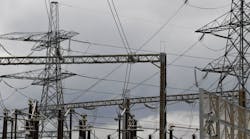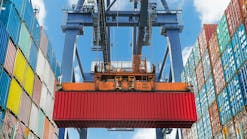At 16.52 on Aug. 9, 2019, the U.K. electricity grid experienced its worst blackout in over a decade. National Grid’s preliminary report states the incident was caused by a lightning strike, followed by the almost simultaneous failure of two generation plants — one gas, one wind — totaling almost 1.4 GW, which saw frequency plummet to below 48.8 Hz.
While National Grid’s systems kicked in and frequency was restored by 16.57, the country experienced severe disruption for many hours as transport and road networks were affected throughout the evening rush-hour. A full report was due by Sept. 6, 2019.
There were undoubtedly lessons to be learned from this event, but one thing of note was that of the 1240 MW of response National Grid instructed to help stabilize the system, 475 MW came from battery energy storage.
These batteries, both behind-the-meter and grid-scale, responded in milliseconds to provide flexible capacity when it was most needed and in the process earned valuable income for their owners. Forecasts by Solar Media suggested that by the end of 2019, National Grid would have up to 1.2 GW of operational energy storage to call upon in the United Kingdom — almost enough to have dealt with the whole event.
Driving Forces
The rise of battery energy storage is part of a wider transformation underway in global energy systems, driven by four major economic trends — often referred to as the four Ds. These are:
- Decarbonization — Climate change requires rapid growth and adoption of renewable energy worldwide, which requires greater flexibility at a system level.
- Digitalization — The evolution of smart tech allows complex systems to be operated remotely.
- Decentralization — The energy landscape is moving from a centralized system to a distributed network of assets.
- Democratization — Distributed energy systems empower individuals to control their consumption and participate in the energy network.
The democratization of energy arises from the first three Ds and is only really now starting to gain momentum, but there is huge potential to be unlocked and stationary energy storage of the kind described above is only one piece of the puzzle.
Electric vehicles (EVs), self-generation, and the ability to connect, control and optimize all kinds of energy-consuming assets means consumers — whether at the business or domestic level — have a huge role to play in the energy transformation.
The Opportunity for Businesses
In the United Kingdom, KiWi Power works with large energy users of all kinds — from hospitals, universities, and hotels to water utilities, metal manufacturers, and mining companies. We analyze, operate, and optimize their energy assets to maximize cost and carbon savings from a range of markets and programs.
These assets include chillers, pumps, air conditioning units, standby generation, combined heat and power (CHP), heat pumps and of course, battery energy storage systems.
Internationally we work with utility partners who license our technology platform to deliver their own distributed energy resource (DER) products and services to their end-user customers. Collectively, we manage over 1 GW of DERs on behalf of our partners in over 10 countries.
Ultimately the driver for large energy users is money. With many spending tens of millions of pounds on energy each year, finding smarter ways to manage and control energy use can make a huge difference to a company’s bottom line.
At its simplest, this can just be a matter of reducing demand when electricity is at its most expensive and shifting load to cheaper times of day. More sophisticated is thinking about how an asset can 'stack' revenue streams by participating in multiple markets, for example, providing ancillary services to the system operator at certain times of day while also responding to peak prices signals and seeking arbitrage opportunities in wholesale energy markets. Ultimately, the best approach is a holistic view that operates across a company’s assets and sites to determine the most optimal outcome, which may involve managing generation, storage, and consumption assets in unison.
Either way, our experience has shown us that the key considerations for businesses remain the same. How easy is it to integrate the technology? Can I trust my aggregator not to affect my asset or processes? Can I see what my asset is doing? Can I build a reliable business case?
Key to the last point is whether markets and regulations are fit for purpose. Most countries have built their energy systems around large, centralized assets funded over 20-year time horizons with minimal competition. They have not been designed to accommodate many thousands of DERs able to respond autonomously at different speeds for different durations.
Scaling the Opportunity
The U.K. demand side response (DSR) market is probably one of the most mature markets of its kind and it is still grappling with a lot of these issues.
Energy users are becoming increasingly sophisticated, so most now understand the concept of DSR and how a smarter, more flexible approach can benefit them. But, the current state of play means many have been left wondering whether the pain is worth the gain.
While the technology exists to seamlessly connect and operate assets, markets, regulation, and customer propositions need to catch up. Too often DSR providers find themselves trying to operate within the rules of a game skewed firmly in the favor of large incumbents or trying to navigate disjointed policy reforms, while end-users find the complexity of the different programs off-putting.
In the United Kingdom, for example, reforms to network charging look likely to remove the incentive to shift demand out of peak periods, while National Grid’s balancing mechanism is still only accessible to businesses with an electricity supply license, a huge barrier to entry.
The good news is reforms are coming and incidents like the August 2019 blackout show just how big a role DERs can play in helping system operators to 'firm' renewable generation and balance supply and demand. For utilities, DSR provides an opportunity to cement the customer relationship and add value to their proposition. Energy-as-a-service packages, which deliver cost savings for a bundled offering can give end-users the certainty of savings they need without the hassle factor of understanding different DSR markets and programs.
One thing is for certain, with global DER capacity forecast to reach over 500 GW by 2028 — and outpace the deployment of new centralized generation capacity from 2024 — the democratization of energy looks set to continue.


